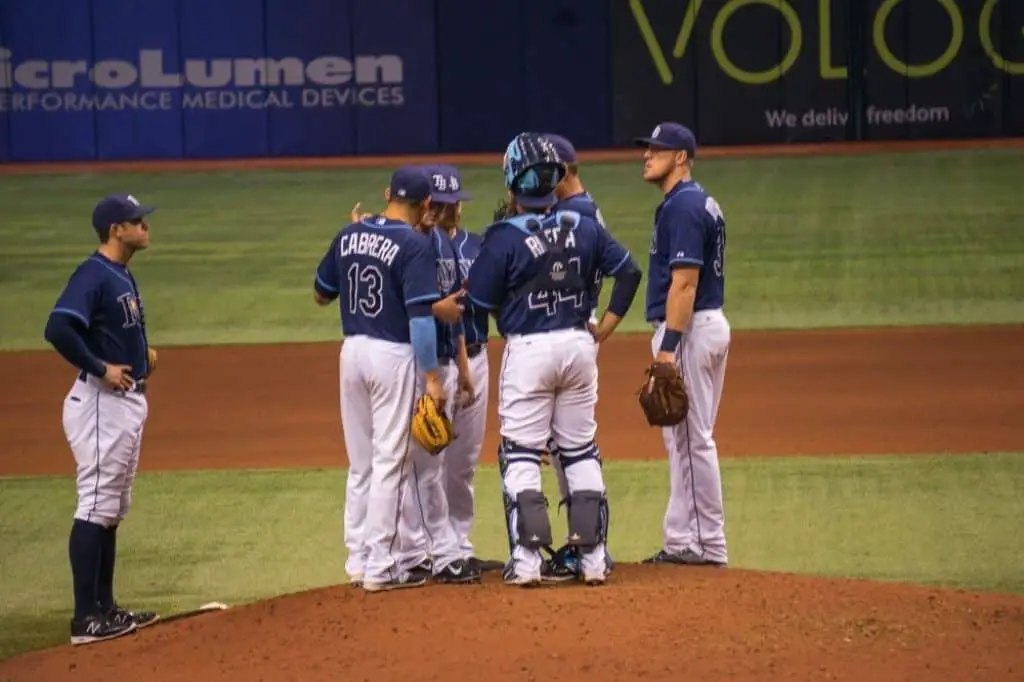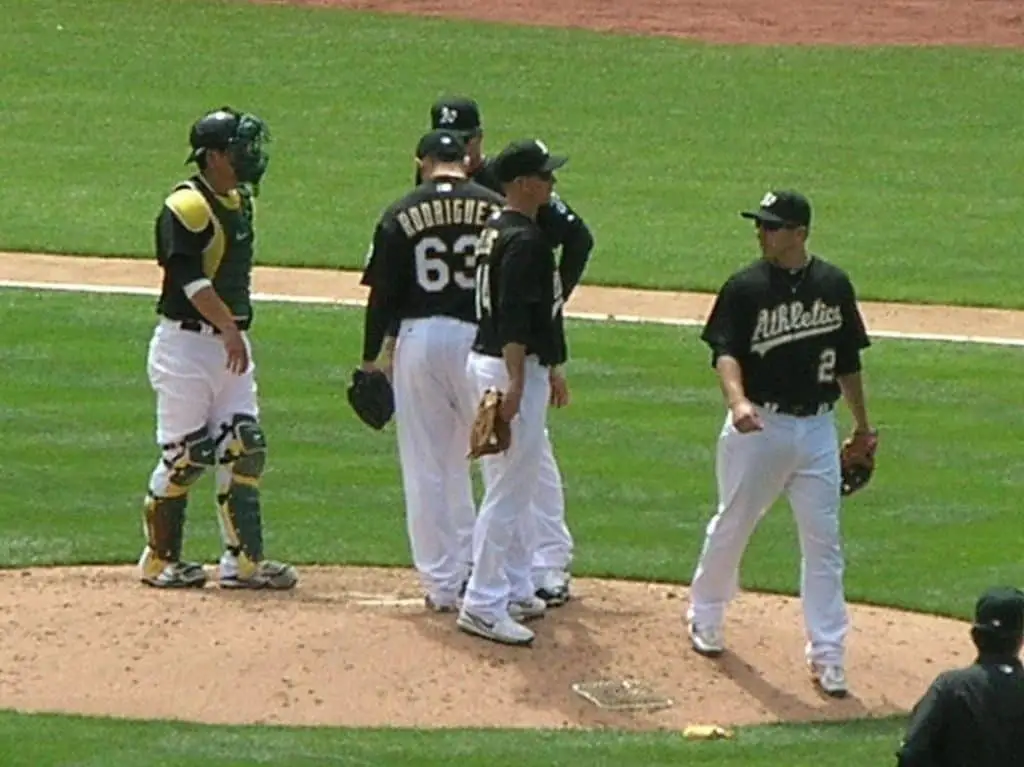What Does MV Mean In Baseball? (Answered In Detail!)
Nowadays, gigantic, high-tech scoreboards are a staple at every ballpark in the Major League.
Filled with various stats, they provide more information to the fans about the game in progress than ever before,
However, all this available in-game data may sometimes seem overwhelming and even confusing.
Most of the stats and information that appear on the scoreboard are self-explanatory and fairly easy to understand.
Every baseball fan, even the casual ones, knows how to track the score on the scoreboard and what columns marked with R, H, and E means.
Still, some fans may be less familiar with other pieces of information appearing on the scoreboard.
This is especially the case with newer additions, such as MV or MVR that are often placed on the far end of the scoreboard.
Below, I’ll explain what does MV mean in baseball and how this stat relates to recent changes in baseball rules.
Table of Contents
What Does MV Mean In Baseball?
In baseball, MV stands for a mound visit. A mound visit is a stop in a play’s action during which a coach or non-pitcher player goes to the round to have a discussion with the pitcher.
While any player or member of the coaching staff can visit the mound, commonly, the persons that most commonly convene with the pitcher are the pitching coach, manager, catcher, or, occasionally, one of the infield players.
The time allowed for the mound visit is rather short, about 30 seconds.
Umpires will start the timing from the moment they allow the visit and the coach leaves the dugout. If the mound visit takes longer than those 30 seconds, the umpire will step up to break it up.
How Many Mound Visits Do You Get In Baseball?

From the viewpoint of the league, too many mound visits slow down the games, making them last longer.
So, on several occasions, the league imposed restrictions on how long the mound visit may last and how many each team can get.
Initially, the only restriction concerning mound visits was that coaching staff couldn’t visit the player more than twice per inning.
In 2016, the league restricted the previously unlimited time for mound visits to only 30 seconds.
Two years later, in 2018, the number of mound visits per nine innings was limited to six, not counting the visits when the pitching change was included,
Finally, in 2019, the league cut down this number even further, to only 5 mound visits per game available to each team.
This rule is still currently in place. In case of a tied game, teams also get one more mound visit for each extra inning.
What Happens If You Run Out Of Mound Visits?
Failing to adhere to the number of mound visits can trigger a penalty for the violating team.
In case a team has exhausted the available mound visits and the manager or a coach crosses the foul line on his way to the mound, then the team must make a pitching change.
The only exception to this is when the pitcher has not pitched to a minimum of three consecutive batters.
Then, the pitcher will continue pitching to complete the first three batters, or until the end of an inning if it comes first.
If the team doesn’t have a relief pitcher warming up in the bullpen, the manager or coach who violated the rule will be ejected.
When a position player makes a visit after his team has used up the mound visits, that player may be ejected if he fails to return to the position on the umpire’s instruction.
What Is Mound Visit Used For?

The discussions at the pitching mound take place for various reasons.
In most cases, when the pitcher is struggling, the pitching coach will make the mound visit to try to calm the pitcher’s nerves, check out how he feels, or discuss a potential pitching change.
Often, the subject of a discussion is how to pitch to a certain hitter. A catcher may make a mound visit when he and the pitcher can’t agree on a sign.
Sometimes, the pitching coach or manager will visit the mound if the opposing team announces the introduction of a pinch hitter late in the close game.
This gives them an opportunity to provide the pitcher with a scouting report and inform him of the strengths and weaknesses of the new hitter.
In some situations, a manager may even make a mound visit simply to stall a bit while the relief pitcher is warming up.
What Does MVR Mean In Baseball?
To allow fans, as well as managers and players, to track how many mound visits are still available, the league has introduced MVR.
While not an official stat, MVR or Mound Visits Remaining is a useful counting measure providing information on how many more mound visits can a time legally take before the end of a game.
Commonly, the information on MVR will appear on the far right end of a scoreboard. When the game starts, the number showing MVR is set to zero.
With each mound visit, this number increases by one every time a coach, manager, or player visits the mound.
This way, fans can always have precise information on the remaining mound visits.
Conclusion
As you can see, mound visits provide very useful opportunities for extra personnel to offer a piece of advice to the pitcher.
Often, the mound visit at the right time can turn the whole game around.
However, as the league limited the number of available mound visits first in 2018 and again in 2019, teams have to be careful and use them wisely.
An illegal mound visit can have a negative impact on winning the game, as it may lead to the ejection of a player or manager.
So, the strategy of using the available mound visits is very important.
To help fans follow all this, the scoreboard in the MLB now features a Mound Visits Remaining counter.
With the introduction of MRV, fans now can keep track of available mound visits at any point of the game.




